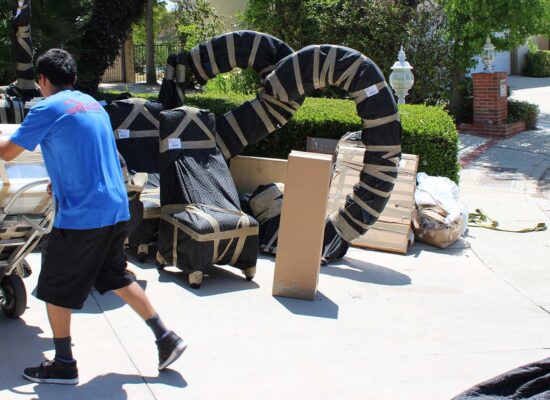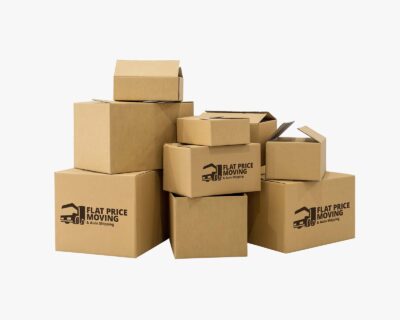The Ultimate Guide on How to Pack Golf Clubs for the Move
Embarking on a long-distance move and wondering how to pack golf clubs safely? This ultimate guide will walk you through every step of the process, ensuring the precious equipment arrives undamaged. From choosing the right bag to securely shipping golf clubs, we’ve covered all bases to help you transport golf clubs without a hitch.
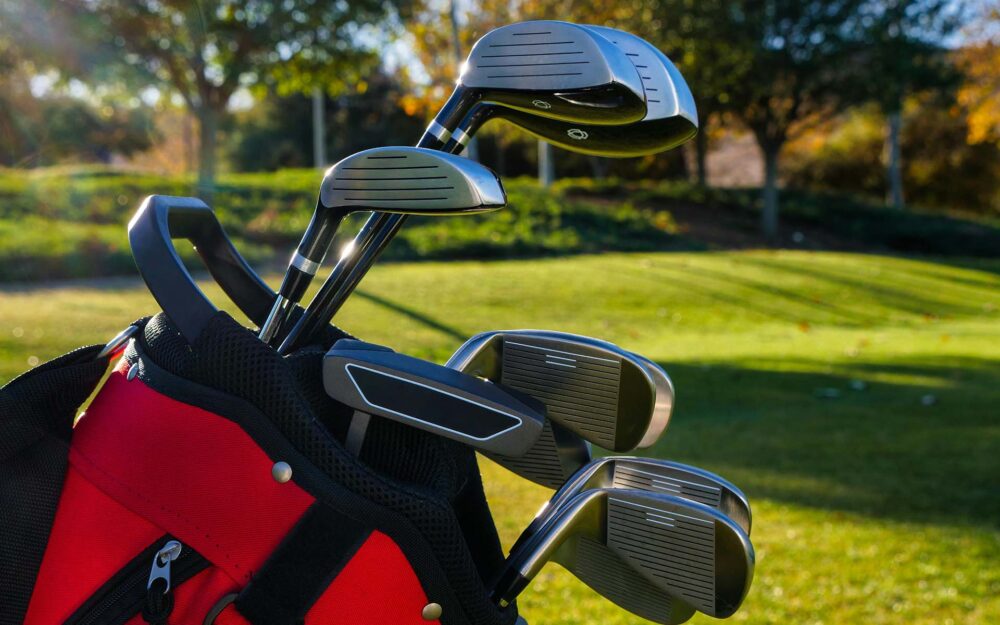
How to Pack Golf Clubs for Cross-Country Moving
When it comes to preparing for cross-country moving, knowing how to pack golf clubs is essential to ensure they move safely and prevent everything from breaking.
Start by cleaning the clubs and using head covers for protection.
Wrap the club heads with bubble wrap, especially for irons and putters, to avoid scratches.
Securely bundle the equipment together to minimize movement within the bag.
Choose a sturdy, padded travel bag — hard cases offer the best protection. Fill any empty spaces with towels or clothes to absorb shocks. Finally, if using a soft bag, add a stiff arm protector to guard against impact. Following these basic steps will help the golf clubs reach their destination securely.
Prepare Golf Clubs for Packing
Preparing clubs for packing is a critical step in the process of planning a relocation and transitioning smoothly to a new home. Ensuring each club is clean and free from damage not only maintains its condition but also facilitates a hassle-free setup upon arrival.
Adequate preparation involves a detailed inspection to address any issues that could worsen during transit. This stage lays the foundation for a systematic and organized approach to securing sports equipment, highlighting its importance in the broader context of relocation logistics.
Clean and Inspect Them
Starting the preparation of equipment with a thorough cleaning removes dirt and grime, potentially revealing underlying issues that require attention before they are packed. Utilizing a soft brush and soapy water, focus on the grooves and heads to maintain optimal performance.
After drying, inspecting each club for signs of wear, such as loose heads or shaft damage, is crucial. Addressing these concerns beforehand ensures that each piece is in prime condition to withstand the journey.
Gather Necessary Packaging Supplies and Materials
Secure the right assortment of different packing materials as part of moving day preparations so that golf clubs are well-protected throughout the journey. Essential supplies include:
- Bubble wrap for individual club heads,
- Stretch wrap to secure each club,
- Stiff arm protector for soft cases,
- Head covers for additional protection,
- A durable, padded travel bag or case.
Selecting these materials with care guarantees that every club is shielded against the rigors of transport, significantly reducing the risk of damage.
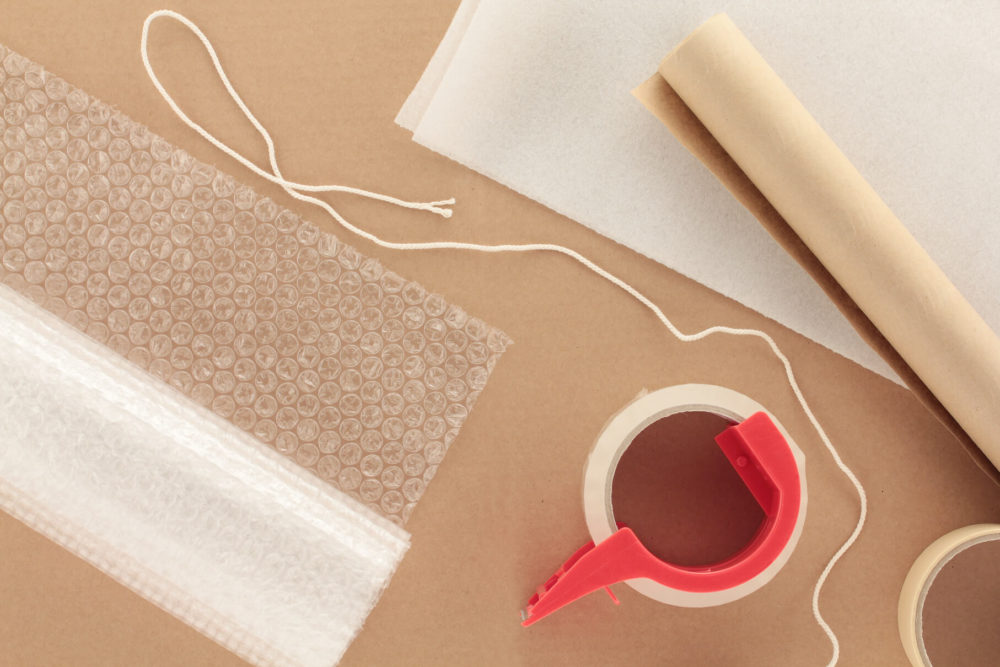
Select the Right Packing Method
Choosing an appropriate method for wrapping and securing sports equipment is critical for a successful transition. The right technique ensures each piece arrives intact, minimizing the risk of damage.
It allows for peace of mind, knowing that these valuable items are well-protected throughout their journey. Evaluating the best approach involves considering the specific needs of the items and the conditions they’ll encounter during transport. For maximum security during transit, use our golf equipment moving tips.
Benefits of DIY Packing Techniques
The benefits of DIY packing methods extend beyond cost savings.
This approach allows for meticulous attention to detail.
And it’s often considered the best way to pack golf clubs, as individuals can tailor the protection to each club’s unique needs.
Adding this task to the moving to-do list allows for a customized packing process, using bubble wrap, head covers, and stretch wrap to safeguard each piece. It fosters a hands-on understanding of the packing process, enhancing the overall preparedness for moving day.
Benefits of Professional Packing Solutions
Professional packing services offer the easiest way to pack for a relocation, especially for those with a collection of sports equipment. Investing in moving and packing services by hiring cross-country movers ensures that each item is handled with expertise and care. Professionals bring the right materials and experience to the table, significantly reducing the risk of damage.
This option is ideal for those looking for convenience and assurance, as it delegates the responsibility of packing to experts familiar with the nuances of safely transporting valuable items.

Choose the Appropriate Bag and Protect the Clubs
Selecting a golf club travel case that offers robust protection is essential to ensure your equipment can relocate safely. A hard case is preferred for its durability and ability to shield against impacts, while a padded soft case provides flexibility and convenience.
To stabilize golf gear inside the case, use dividers or cushioning materials to keep each piece from shifting during transit. This step is crucial in maintaining the gear’s alignment and condition, preventing unnecessary wear or damage.
Use Headcovers and Additional Padding for Drivers and Woods
When preparing larger pieces with bigger heads, such as drivers and woods, especially when moving out for the first time, it’s vital to employ headcovers and additional padding. These items offer an extra layer of protection against knocks and bumps that can occur.
Placing headcovers on each piece not only safeguards the head but also the shaft, while wrapping them in bubble wrap or soft cloths provides an additional buffer. This approach minimizes the risk of cosmetic and structural damage, ensuring that items remain in top condition.
Bundle Irons, Wedges, and Putters Securely
For a stress-free moving experience, bundling irons, wedges, and putters together is a best practice worth following. This technique not only conserves space but also minimizes the chance of scratches and other damage.
Use soft, flexible materials like towels or specialized golf wraps to individually wrap each piece, then bundle them together using rubber bands or velcro straps. This method keeps the pieces aligned and prevents them from clanking against each other.
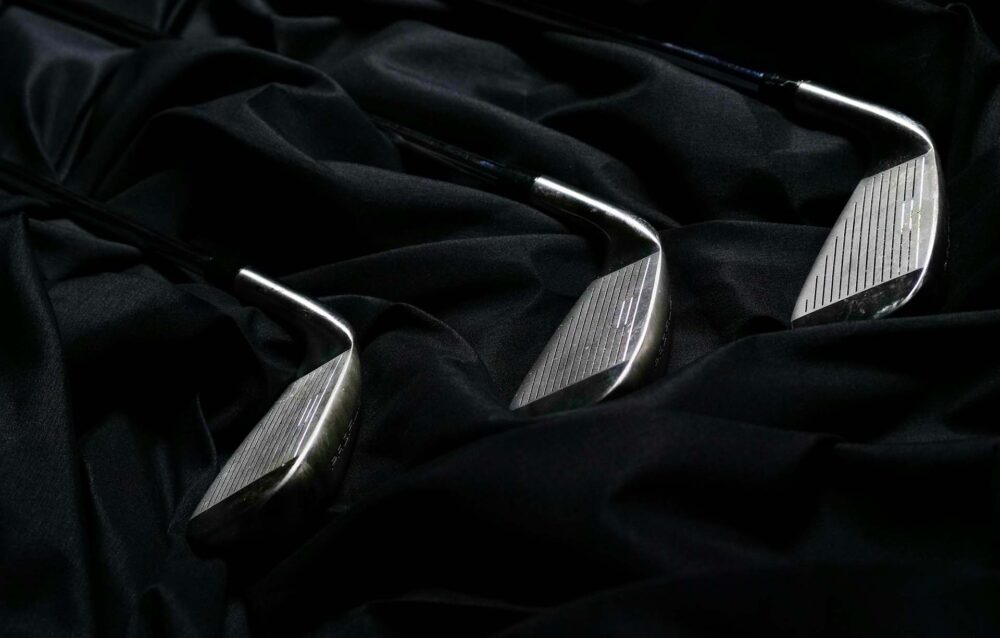
Fill Empty Spaces With Packing Materials
Filling empty spaces in boxes is a crucial step toward ensuring less relocation stress. This technique prevents the equipment from shifting and possibly incurring damage during transit. Soft items like bubble wrap, foam padding, or even towels and clothing can be used to snugly fit into any gaps within the bag or case.
Adding this task to a to-do list ensures that every piece of equipment is securely nestled, minimizing movement and providing an additional layer of protection. It’s a simple yet effective strategy to protect all belongings.
Secure and Label the Bag
Once everything is packed, securing and labeling the bag is the next important step. For extra protection, the bag itself can be placed inside the best-size cardboard box that fits, surrounded by materials to absorb shocks. This dual-layer protection is especially useful if the items are being handled by third-party movers.
Secure the box with strong packing tape and ensure it’s well labeled with the contact information, destination address, and a “fragile” warning to handle with care. Labeling not only aids in the identification of all belongings but also provides essential information for handling.
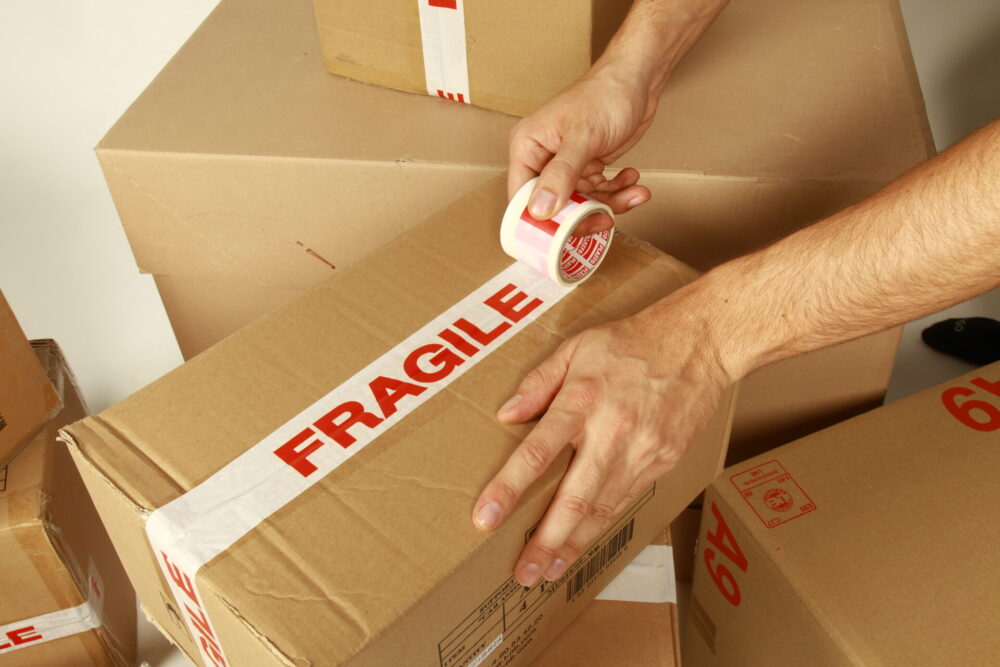
Transport Golf Clubs – Options and Tips
Transporting clubs requires careful consideration of various options to ensure a successful long-distance move. Whether choosing to fly with them or entrust them to professional movers, the key is to evaluate factors such as cost, convenience, and the level of protection each option offers.
For air travel, familiarize yourself with airline policies regarding sports equipment. If considering shipping, assess the mover’s reliability and cost-effectiveness. Engaging long-distance movers presents a hassle-free option, albeit often at a higher cost. Balancing these considerations will guide you in choosing the best transport method.
Flying With Golf Clubs
This involves a few critical steps to make sure they arrive safely. Most airlines accept golf bags as checked luggage, though it’s wise to check size and weight restrictions beforehand.
To prepare for TSA inspections, leave the bag unlocked or use a TSA-approved lock, and familiarize yourself with any prohibited items that cannot be packed. Additionally, add an identification to the bag to help locate it in case it gets misplaced.
Shipping Golf Clubs
Shipping offers an alternative to flying. Hiring long-distance movers who specialize in transporting sports equipment can provide peace of mind, as they offer an insurance option. One of the options to look into is the Flat Price Auto Transport and Moving company.

Why Trust Professionals With the Golf Clubs
Entrusting the sports equipment to professional cross-country movers can be the wisest decision for their safe relocation. These experts have the experience and equipment necessary to handle valuable sports equipment with care.
By investing in professional packing, long-distance moving services, and even auto transport services, you make sure that every aspect of the relocation is handled with precision. Professionals understand the nuances of securely transporting items of varying fragility and value.
Auto-Transport
If your first concern is having your vehicle transported safely and efficiently, enclose shipping is the way to go.
Read morePacking Services
Our moving teams are trained to pack your belongings in the most efficient manner possible.
Read moreMoving Services
Whether you are moving from New York to Los Angeles or from San Francisco to Chicago, we can help you.
Read moreCarefully Research Long-Distance Moving Company
Selecting the right cross-country moving company requires thorough research. A crucial first step is to verify the mover’s credentials by checking their USDOT number with the Federal Motor Carrier Safety Administration (FMCSA).
This verification ensures that the moving and auto transport company is legally registered to operate and has a history of compliance with safety regulations. Additionally, reading reviews, asking for references, and obtaining detailed quotes from multiple companies can provide insights into their level of service. Taking these steps helps identify a moving and car shipping company that will handle your belongings with care.

Flat Price Auto Transport and Moving is the Best Team for You
Properly packaging golf clubs for a long-distance move involves several key steps, from selecting packaging materials and cases to ensuring that each club is securely stabilized. The benefits of taking these steps guarantee the protection of the valuable equipment.
For those seeking professional assistance, our team at Flat Price Auto Transport and Moving is equipped with the expertise and resources to pack and transport golf clubs professionally. We understand the importance of sports equipment and are dedicated to delivering it safely. For a hassle-free moving experience where equipment receives the care it deserves, contact us, at Flat Price Auto Transport and Moving.
Frequently Asked Questions
How Do I Choose the Best Golf Club Travel Case?
Selecting the optimal travel case involves considering durability, weight, and security features. Hard cases offer maximum protection, while soft cases provide flexibility and are lighter.
Can I Carry My Golf Clubs on a Plane, or Should I Check Them?
Most airlines allow sports equipment as checked baggage, with specific guidelines and fees. Carrying them on is generally not permitted due to size constraints.
What Are the Biggest Risks When Transporting Golf Clubs?
The primary risks include potential damage from impact, loss during transit, and exposure to extreme conditions. Employing protective measures and insurance can mitigate these concerns.
How Much Does It Cost to Ship Golf Clubs?
Shipping costs vary based on destination and service level chosen. Utilizing specialized sports equipment shipping services can offer competitive rates and reliability.
What Should I Do if My Golf Clubs Are Damaged During Transport?
In the event of damage, immediately document the condition with photos, file a claim with the transport provider, and review any insurance coverage to understand the compensation process.


